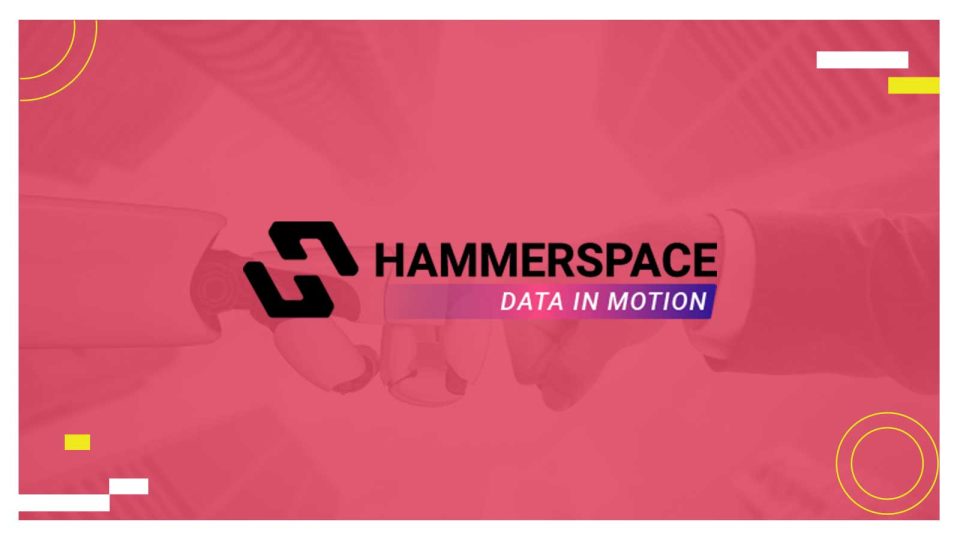Hammerspace Data Orchestration to Enable Distributed GPU Computing
Hammerspace, the company orchestrating the next data cycle, announced that its Global Data Platform can now be used to process, store and orchestrate data in edge compute environments. This innovative solution combines Gryf, co-designed by SourceCode and GigaIO, the first ever suitcase-sized AI supercomputer, with Hammerspace’s Global Data Platform to bring unprecedented levels of shared AI processing power to any location, including those operating with limited or no networking infrastructure.
Read more: Supermicro Advances AI Capabilities in Edge Computing with New Industry-Leading System Portfolio
“Our ability to orchestrate data across remote data centers, clouds and edge environments transparently and online ensures that the data gets to GPU resources regardless of its physical location. Data orchestration will be the next hot topic in the coming year and beyond, especially in AI use cases.”
This solution is highly relevant for use cases such as capturing large map sets and other types of geospatial data in tactical edge environments for satellite ground stations and for natural disaster response, and it is an effective way to transport large amounts of data quickly.
Prior to this solution, organizations would either have to send data to a data center for processing and analysis, or their edge environments would be limited by the compute resources and storage capacity that non-GPU edge computing devices with limited scalability could provide. This approach limited the ability to produce relevant results onsite and was greatly inhibited without a data orchestration solution to move data to GPUs in the data center.
“Our customers and partners consistently tell us that data orchestration is a top priority for their AI workloads,” said Tony Asaro, Chief Strategy and Business Development Officer for Hammerspace. “Our ability to orchestrate data across remote data centers, clouds and edge environments transparently and online ensures that the data gets to GPU resources regardless of its physical location. Data orchestration will be the next hot topic in the coming year and beyond, especially in AI use cases.”
Gryf Brings GPU Processing Power to Edge Environments
Gryf is a portable supercomputer in a ruggedized suitcase form factor for rapid AI processing of time-sensitive data in the field, also referred to as a mobile fly-away kit. SourceCode and GigaIO announced Gryf earlier this quarter, and it will be available in the third quarter of this year.
Hammerspace Enables High-Speed Processing and Orchestration of Data Across Distributed Environments
Hammerspace can run on a single Gryf appliance alongside other software packages like Cyber, geospatial, and Kubernetes containerized applications, and other AI analytic packages. Hammerspace’s standards-based parallel file system architecture combines extreme parallel processing speed with the simplicity of NFS, making it ideal for ingesting and processing the large amounts of unstructured data generated by sensors, drones, satellites, cameras and other devices at the edge.
Read more: Top 10 AI Companies for Data Center and Edge
Notably, the full benefit of Hammerspace is unlocked when multiple Gryf appliances are deployed across a distributed edge environment so that Hammerspace can join multiple locations together into a single Global Data Platform. Hammerspace data orchestration services enable full utilization of all available GPU resources to accelerate edge processing. This capability is extremely beneficial for AI at the edge, where limited hardware, bandwidth, and connectivity constraints are common challenges.
Hammerspace data orchestration also simplifies the movement and migration of data when Gryf appliances are transported back to data centers for additional data analysis and long-term protection.
“GPUs are data hungry, posing a significant challenge when you must enable onsite insight across multiple devices in a decentralized way, and with possibly inconsistent connectivity,” said Matt Ritter, Vice President of Engineering at SourceCode. “Hammerspace helps solve this problem with efficient orchestration of distributed data and supercomputer-class data speeds. This also makes Gryf a great example of the SourceCode co-design model: seamlessly integrating best-of-breed technologies to solve hard problems for customers.”
Also Read: Saudi Arabia Data Center Innovator Ezditek Appoints Stuart Manby as Chief Sales Officer
“We are excited to announce the integration of Hammerspace’s file system with Gryf, marking a significant leap forward in our mission to drive edge AI capabilities,” said Alan Benjamin, CEO of GigaIO. “This partnership not only enhances Gryf’s capabilities by leveraging Hammerspace’s Global Data Platform but also sets a new standard for data accessibility and orchestration from the edge.”
[To share your insights with us as part of editorial or sponsored content, please write to psen@itechseries.com]


